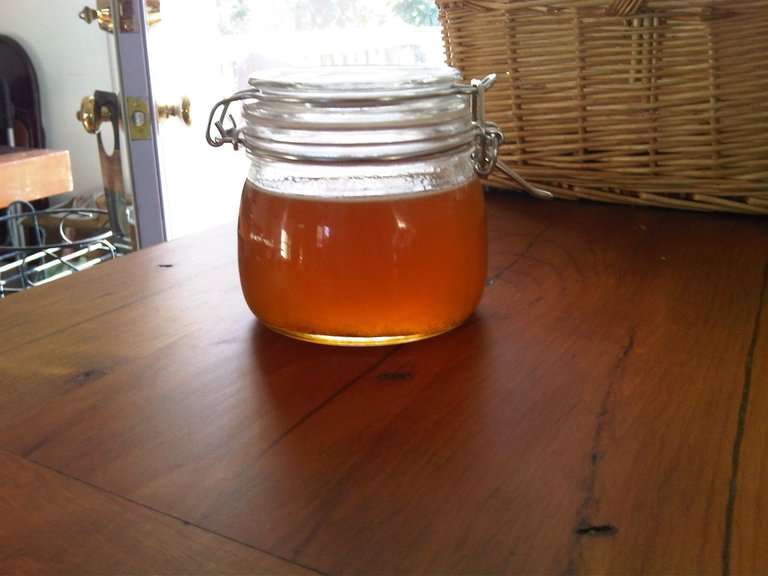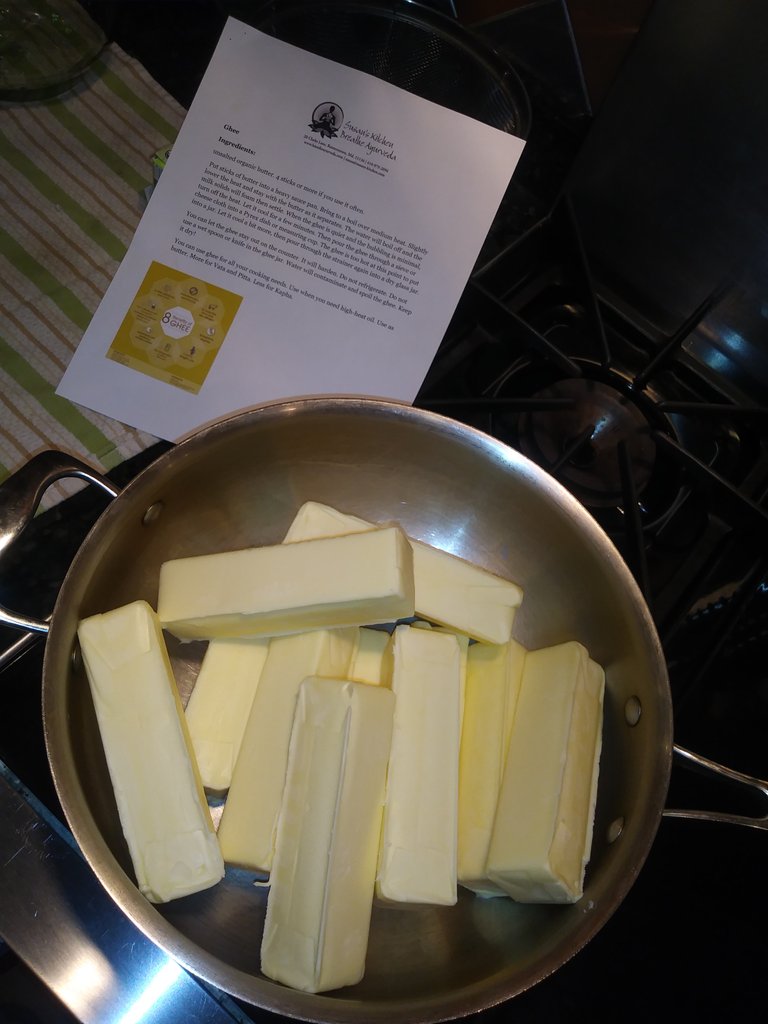Breathe Ayurveda Says…
By Susan Weis-Bohlen
Steemit June 2018
Oil
The oil aisle in the supermarket is just overwhelming. When I was growing up in the 70s I remember Crisco and maybe vegetable oil being the go-tos. But now we have so many choices – and so much information coming from every direction that it’s hard to figure out what to use, what’s healthy, what’s not, what’s high heat, what will lower your cholesterol, what can help you live longer – and not to mention – what tastes good?
When deciding on which oil to buy, you’ll want to take into account a few key factors including stability at high heat. In this article, we’ll review all of these.
Some oils are meant to withstand high heat points, but others turn rancid when exposed to extreme heat. Some oils are best to add to food after it is cooked, and some express their full flavor and health benefits when heated during cooking.
Also of great importance is the amount of polyunsaturated fats and monounsaturated fats (PUFAs and MUFAs).
PUFAs are liquid at room temperature as well as when placed in the fridge. They contain both Omega-3 and Omega-6 fatty acids. Omega-3 fatty acids help to reduce inflammation and can even decrease your risk of certain diseases, such as heart disease, arthritis and cancer. Omega-6 fatty acids, on the other hand, may have a role in increasing inflammation. You will find Omega-6 fatty acids in many prepared and processed foods. A central problem in the Western diet is over-consumption of Omega-6s, which is why it is so important to use the right kind of oil and seek out foods that have more Omega-3s than 6s. Omega-3s are found in higher proportion in seeds and nuts, and the oils are extracted from them. The oils used in most processed snack foods (cookies, crackers, and sweets and fast food) are refined vegetable oils, such as soy oil, that are nearly all Omega-6s.
According to Dr. Andrew Weil, soybean oil alone is now so ubiquitous in fast foods and processed foods that an astounding 20% of the calories in the American diet are estimated to come from this single source. This is the category of Omega-6 oils that INCREASE inflammation.
Dr. Weil, a world-renowned complimentary medicine doctor, says, “The body also constructs hormones from omega-6 fatty acids. In general, hormones derived from the two classes of essential fatty acids have opposite effects. Those from omega-6 fatty acids tend to increase inflammation (an important component of the immune response), blood clotting, and cell proliferation, while those from omega-3 fatty acids decrease those functions. Both families of hormones must be in balance to maintain optimum health, so there are some omega-6 benefits”.
MUFAs are typically liquid at room temperature, (unless it is a really cold day and you keep your house cool) but when you refrigerate them, they turn solid. MUFAs, as opposed to saturated fats and trans fats, can actually lower your cholesterol and potentially reduce your risk of heart disease and stroke. MUFAs are naturally high in vitamin E, an antioxidant that protects your cells from damage. Omega-3 fatty acids are in the fat of cold water fish like salmon, sardines, herring, mackerel, black cod, and bluefish. They can also be found in vegetarian sources such as avocados, peanut butter, nuts, seeds, olive oil, peanut oil, canola oil (with a caveat – see below), sesame oil and sunflower oil. All are high in monounsaturated fats – so enjoy these foods!
Remember that MUFAs and PUFAs are high in calories – and even though they can be good calories, be aware that you can overdo a good thing too. A handful of nuts (raw, unsalted or roasted in a good oil) and a teaspoon of oil is enough to reap the benefits of fats without any negative health effects, like weight gain.
The University of Maryland Medical Center reports that the ratio of omega-6 fatty acids to omega-3 fatty acids should be between 2 to 1 and 4 to 1. The best dietary sources of omega-3 fatty acids include salmon, mackerel, halibut, tuna, herring, flaxseeds, flaxseed oil, soybean oil, canola oil, walnuts, walnut oil and pumpkin seeds. The primary sources of omega-6 fatty acids include soybean oil, corn oil and safflower oil.
Back in the day, we used to consume roughly equal amounts of Omega-3s and 6s, but with proliferation of Omega-6s in our food, most of us have a hard time finding that balance. That is why the choice of the oils we use in our food preparation is so crucial to our health. We cannot control everything we outside the home, but at least we have a chance when we prepare it ourselves.
As with just about everything we eat, you can google your way around and find contradictory information on just about every oil. Some folks rave about Canola, others say it’s poison. Coconut oil is all the rage, but the Heart Association says it will kill you! Suffice it to say that it’s a jungle out there (where you will find Palm Oil).
It goes without saying that all your oil should be organic. A lot of pesticides are “lipophilic” which means they love oils and tend to concentrate in them. If your oil is not organic, it may be blended with other oils of a lesser grade, contain GMOs (Genetically Modified Organisms), or processed with chemicals.
Top Oils:
Ghee: Also known as clarified butter, ghee has been used in Indian cooking for centuries and is considered one of the healthiest of oils, rich in vitamins A, D and E. People who are lactose-intolerant usually have no problem with ghee as the milk solids have been removed in the cooking process. It can be used like butter, and it also has one of the highest heat points of all oils so it’s great for sautéing spices, stir frying vegetables and other high-heat recipes. Ghee also contains butyric acid, a short-chain fatty acid that acts as a detoxifier and improves colon health, is an anti-inflammatory, and may be help for people with IBS, Crohn’s disease and ulcerative colitis. Ghee is solid at room temperature. Do not refrigerate. Never get it wet as that will spoil the ghee. (see recipe below)
Flaxseed Oil: This is a top ranking oil health-wise. Flaxseed oil is added to food after it is cooked, or to smoothies, or salads. It should never be used for cooking. It provides a huge amount of Omegas-3s so it’s great for vegetarians and non-veggies alike. It may lower blood pressure and protect the heart. The slightly nutty flavor is yummy when used in salad dressings. Liquid at room temperature. Highly susceptible to going rancid so store in the fridge.
Olive Oil: As ancient as Ghee, olive oil is all the rage and rightly so. But beware – it is NOT a high heat oil. It’s smoke point is a low/medium, heat of 375 degrees. Health-wise it has anti-inflammatory compounds, is high in Omega-3s and has been said to help with everything from cancer prevention to boosting cognitive function. It is delicious, but make sure you purchase organic, cold pressed and that the bottle does not say “blended”. If it does, it is probably blended with inferior oils. Purchase only EVOO – Extra Virgin Olive Oil – to be sure to get all the benefits of this magnificent oil. Liquid at room temperature. Do not refrigerate.
Canola Oil (Organic ONLY); Canola oil is a product of Canada where this ancient oil was modified using Rapeseed plants and blended – hence the name Canada-Oil – became Canola Oil. This is a high heat oil (400 degrees) with the most Omega 3s of any plant-based oil. The taste is neutral so it will not affect the taste of your dishes. The problem with Canola oil is that most of what you find in the West comes from GMO plants, so if you avoid GMOs this isn’t for you. Conventional Canola oil is processed with a chemical solvent called hexane and then bleached to make it appear less cloudy. Buy organic cold-pressed or expeller pressed for the healthiest versions. Liquid at room temperature. Do not refrigerate.
Avocado Oil: this high-heat oil (400 degrees) is rich in Vitamin E, and is great topically as well as taken internally. Undeniably healthy with relatively little controversy (except that it’s expensive) it’s high in Omega 3s and it tastes great. Avocado oil’s smooth flavor really adds another dimension to your cooking. We love to use it on roasted vegetables, and sautéing foods with mild flavors like zucchini. Liquid at room temperature. Do not refrigerate.
Extra-Virgin Sesame Oil: This is a medium/low heat oil. It is high in vitamin E, vitamin B-6, zinc, magnesium, calcium, copper and iron – so it’s super healthy. Unrefined sesame oil is best used for low-heat sautéing. A naturally refined version is better for high-heat stir-frying. Toasted Sesame Seed oil is best used sparingly – but do use it - as the taste is intense. It adds a delicious Japanese-style flavor to just about everything. Liquid at room temperature. Do not refrigerate.
Less Than Best Choices:
Grapeseed Oil: While this does have a high smoke point, this oil is high in Omega-6s with no Omega-3s. It has also been known to have toxic levels of PAHs (polycyclic aromatic hydrocarbons) which are used to process this oil. You can avoid this by buying organic, but it will still be high in Omega-6s. Liquid at room temperature.
Coconut Oil: Breaks my heart to write this, as we use it a lot in south Indian Cooking, but this oil should probably be used in moderation. It is a high heat oil, but it is known to raise LDL (bad cholesterol) even though the MCT’s (medium-chain triglycerides) in coconut oil are said to lower HDL (the bad cholesterol). In the typical American diet, where we are so inundated with LDL-increasing oils, it is probably good to avoid any more LDLs in your diet. If you feel you have pretty clean diet, relatively balanced MUFAs and PUFAs, this may not be a bad choice, but you will have to decide. This oil stays solid at room temperature.
Most Vegetable Oils (like Soybean). Again, more PUFAs then MUFAs – so it’s high in Omega-6s. This is said to be one of the very worst oils you can use. But it’s so prevalent because it’s cheap. It’s highly processed and refined and almost always genetically modified. It has zero health benefits, and many health detriments. Avoid whenever possible. Many restaurants use this oil in their cooking because it’s so inexpensive. Liquid at room temperature.
Corn Oil: With a ratio of 49:1 for Omega 6 – Omega 3 (healthy ration is 4:1) this is a really bad choice. As with Soy Oil, almost all Corn Oil found in the USA is GMO. Zero health benefits. Liquid at room temperature. Corn oil is highly refined and hexane-extracted. It is also unstable at high heat, which causes oxidation, a process that generates free radicals that damage cells, compromising our health at every level.
When choosing oils it may be tempting to be swayed by the price – but what is the price of your health? In Ayurveda, Indian medicine, oil is used as medicine or as a vehicle for delivering medicine. If one uses inferior oils the opposite effect can happen – your health can be damaged.
In a nutshell, look for unrefined, expeller or cold-pressed organic high Omega-3 oils.
In addition to buying healthy oils, you can further prevent harm by taking your own oil with you when you go out to eat. Simply carry a small bottle of your favorite healthy oil and ask the server to request that the Chef use it in preparing your meal. You can even say you have an allergy (allergic to oils that can kill you!).
Ghee Recipe
This magical elixir is the base of so many Ayurvedic recipes, medicines and healing practices. Ghee is said to be the only oil that carries the nutrients in food and spices through all seven layers of our tissues (Dhatus): plasma, blood, bones, muscles, fat, nervous system, reproductive system. Ghee activates many healing qualities on our spices, which is way we sauté our spices in ghee at the beginning of many recipes. Once you master making ghee, you can become creative and use different spices and herbs to make digestive ghee, such as garlic, cilantro or triphala ghee. Don’t be afraid to make ghee. Some people find it intimidating, but by staying present, using all your senses and preparing the ghee in a loving, caring way, you cannot fail! Your ghee will be delicious, nutritious and healing.
This recipe will make a small pot of ghee. Do not refrigerate. Do not get wet.
Ingredients:
One pound (4 sticks) of organic, unsalted butter. Find the best organic butter available in your area
2-3 clove buds (optional)
Directions:
Place the butter into a saucepan preferably with a heavy bottom. Turn the heat up to medium and watch the butter as it melts.
Ghee requires using all of your senses, so do not step away. Pay close attention to the process.
As the butter begins to melt, you can lower the flame to medium/low, and stir occasional or even not at all.
You will notice that a white foam will form on the top – these are the milk solids separating from the butter. You will also notice a fine steam rising – that is the water evaporating. The sputtering will be loud and rapid.
After about 15 minutes or so (ghee cooking time is variable as it depends on your altitude, the type of butter, electric or gas stove and the type of pot you are using) you will notice the ghee beginning to quiet down, the color will change to a deep golden hue, and you will notice the milk solids settling at the bottom of the pan and begin to turn brown. At this point, you can turn the burner off. Ghee burns quickly, so pay attention and as soon as the ghee quiets down and you notice only a few bubbles, it’s done.
Allow it to cool off for a few minutes in the pot – it is very hot at this point. You can skim off any remaining foam and save it to add to food, as it’s medicinal in quality.
Carefully pour the ghee through a fine mesh sieve into your ghee container or a Pyrex glass to cool off even further.
Do not pour the ghee directly into a glass jar until it has cooled off significantly or the jar will crack (I have done this!). Tip: if you can’t wait to pour into a jar, put a metal knife or spoon in the jar and that will absorb the heat so the jar won’t crack.
You can also purchase a stainless steel ghee container at an Indian store.
The curds that settle at the bottom of the pot can be used to feed your pets or you can add a bit of jaggery (Indian boiled sugarcane solids) to them and have a delightful little snack.
Ghee has an incredibly long shelf life when kept covered and dry. Never use a wet knife or spoon to scoop out your ghee as it will spoil it. 100 year-old ghee is sold in India as medicine but yours doesn’t need to age that much to have incredible health benefits. Ghee is especially pacifying for Vata and Pitta. It’s also good for Kapha, but use in moderation. Ghee is also a high-heat cooking oil.



Please give me a follow and I will give you a follow in return!
Please also take a moment to read this post regarding bad behavior on Steemit.✅ @breatheayurveda, I gave you an upvote on your first post!